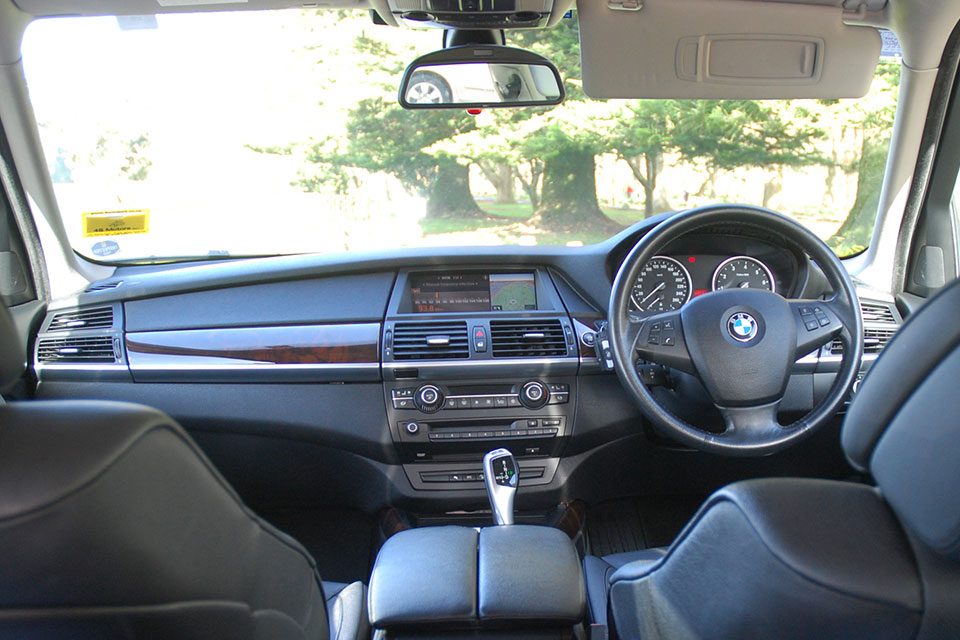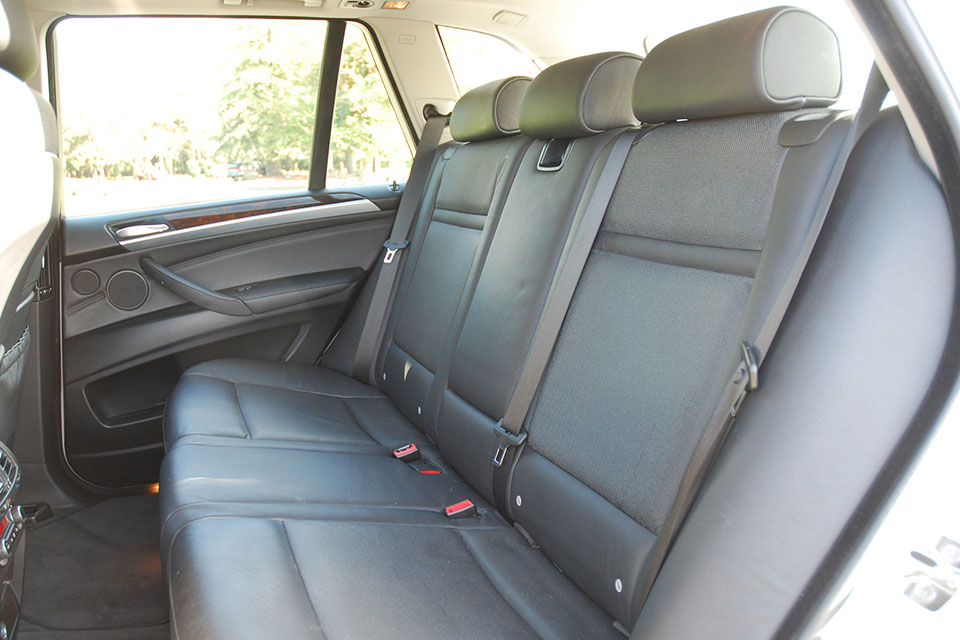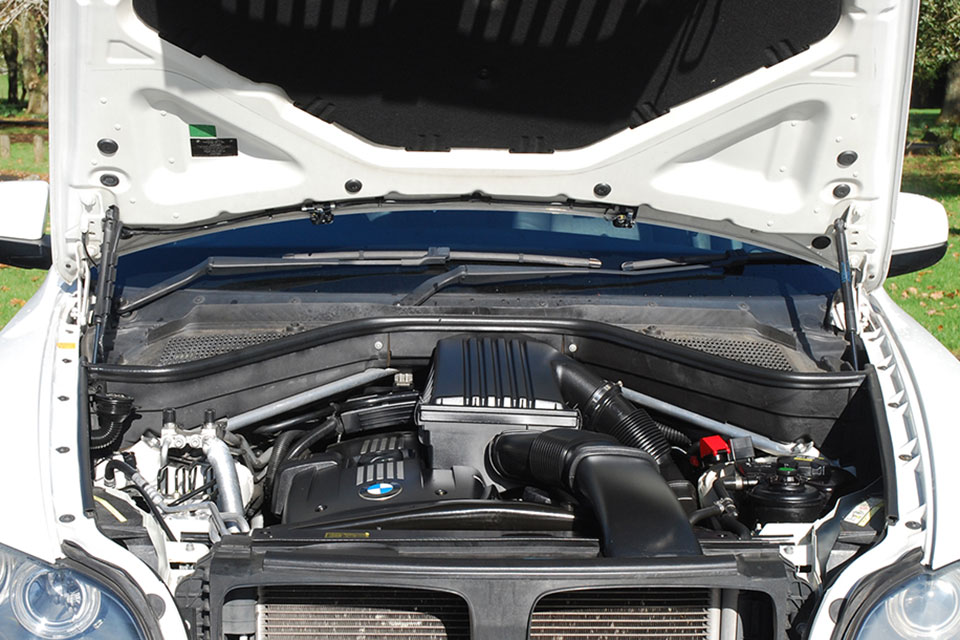BMW X5 2006-2013 used car review
The BMW X5 offers strong engines and excellent handling for a large SUV.

The BMW X5 offers strong engines and excellent handling for a large SUV. Electrical issues and expensive parts can make it costly to run.
The X5 was BMW’s first SUV and was originally based off the large 5-series sedan, along with components from Land Rover. It quickly developed a reputation for being one of the best of its kind on the road. The second generation grew larger, by nearly 150mm in length, giving it a more spacious interior and the option of seven seats.
Inside and out
Even the entry-level 3.0Si X5 looks sporty and aggressive for an SUV, thanks to its large lower front air ducts and a building front hood. The front features modern projector-style headlamps and the BMW-family “kidney” grille. The wheels are large, with the smallest available 18-inches in diameter. At the rear, twin exhaust pipes exit through the rear bumper.
Inside the car, everything feels very high quality, with nice soft-touch plastic surfaces, and leather and wood trim. The gauges are huge, easy to read and nicely trimmed with aluminium rings. The dashboard features BMW’s iDrive infotainment system, controlled by a dial on the centre console.
It operates the radio, media system, satellite navigation and some vehicle settings. The radio in this used imported car will require a band expander to receive local stations. The navigation system on import models will not operate in New Zealand without reprogramming.
Our X5 has the optional panoramic roof, running from near the windscreen all the way back to above the rear passengers. It is tinted to block UV, though on hot days you will want to close the electric blind.
The front seats are clad in quality-feeling leather and are very firm yet still comfortable and supportive. Both are adjustable electrically in a range of directions, including lumbar support. The base can also be adjusted fore and aft to provide more leg support.
Three adults will easily fit in the rear seat, with the centre section flat and comfortable for that passenger. Legroom back here is also excellent. A third row of seats was an option, though rare and hard to find. Rear-seat passengers also get controls for the ventilation system.
At 620 litres it should handle four large and two medium suitcases. Fold down the rear seats and the space expands to a reasonable 1,750 litres. The X5 features a two-piece rear door, with the top two-thirds opening upwards and the lower third downwards. That means you can drop smaller items in without opening the full, heavy door. It also creates a practical bench with the bottom section down.
On the road
This generation X5 is offered with a range of six and eight-cylinder petrol and diesel engines. There are range-topping versions offered for either fuel and they have near-supercar levels of power. Most Japanese import X5s, like our review car, are equipped with a 3-litre six-cylinder petrol engine. It produces 195kW and 315Nm.
The only transmission available with this engine is a six-speed automatic which can be shifted manually. All-wheel drive is standard. The engine is very smooth and quiet, and the transmission shifts well. It offers reasonable performance and, even with a full load on board, you will overtake other vehicles easily.
The X5’s handling is excellent. There is virtually no body roll, and the steering is nicely weighted and direct for this type of vehicle. The brakes are good and pull up the car very quickly. The handling comes with a significant penalty though - the ride is very hard and you will feel many of the bumps and imperfections in the road.
With full-time all-wheel drive and traction-assisting electronics, the X5 can handle most slippery surfaces, although it is best kept on the tarmac. Ground clearance is not great; the front and rear bumpers and exhausts hang low. Travelling across uneven ground puts them at risk of damage.
Tinted windows, thick rear pillars and three rear headrests make visibility to the rear extremely poor. Thankfully, all X5s come standard with rear parking sensors and a reversing camera. An optional system available from 2010 uses multiple cameras to provide a “bird's eye” view of the car.
The tow rating is impressive for a luxury SUV. It will pull up to 750kg unbraked, (a medium-large garden trailer) and up to 2,700kg braked (a medium-to-large trailer boat). The all-wheel drive system will be beneficial on slippery boat ramps.
Safety
RightCar lists the X5 as having a five-star ANCAP rating (from 2003 onwards). Standard safety equipment levels are very high and include front, side and curtain airbags that cover the front and rear seats, traction control, electronic stability control and electronic brake-force distribution. Additional features, including lane-keeping systems and blind spot alert, became optional from the 2010 update.
ISOFIX child seat mounts and top tethers are found in the window positions at the back. All three rear seats feature full shoulder-type belts, which offer more protection than the lap-only type. Seven seat models also have shoulder-type belts in the third row.
Reliability
The previous generation X5 (1999-2006) was considered somewhat of a reliability nightmare. So far, the second generation appears to be better built. The engines and transmissions are considered reasonably durable. The 3-litre unit in our review vehicle uses a timing chain which should not need regular replacement. Very isolated reports of the chain breaking, causing significant engine damage, are not frequent enough to be considered a standard issue.
The model is known to suffer from occasional electrical problems, which will trigger a check engine light or hazard light. Most of these are not serious and can be corrected with a software update or sensor cleaning. It does, however, mean a trip to a service provider and a diagnostic charge. Expect to spend a minimum of a few hundred dollars each time.
Generally, they run low-profile tyres and the combination means curb damage is very common. While usually just cosmetic, it can lead to imbalances and cause vibrations.
The big SUV tyres fitted are also expensive. Expect a bill of around $1,500 for a full set of tyres if you have the basic 18-inch wheels, to more than $2,000 for an X5 riding on 20-inch or bigger wheels. The front tyres are narrower than those at the rear, meaning they cannot be rotated around the car to extend their life.
The soft surface of some interior plastics can break down and wear off over time. Although it looks untidy, it does not cause problems with how the car operates. New replacement parts are pricey and used parts are hard to find.
The BMW dealership we spoke to recommends purchasing mechanical breakdown insurance with any used X5. They say the model is not problematic but items that do occasionally fail are costly to replace. An example they gave was the electric water pump. A water pump typically costs $300-$500 but the X5’s costs $1,600.
Cost of ownership
BMW recommends servicing the 3-litre petrol X5 every 12 months or 15,000km, whichever comes first. Our local BMW dealer says the service costs around $350, which is very low for such a premium and complicated car.
RightCar estimates that over 14,000km of driving a year, an X5 will cost $3,280 to fuel. This is $400 a year less than the previous generation model. The 85-litre fuel tank will cost $170 to fill and should take you 680km before the fuel light comes on.
A vehicle licence for the X5 costs $76.92 a year, with the car in the cheapest ACC levy group.
Trade Me Insurance estimates insurance for an X5 valued at $37,360 will cost $73.30* per month. This is a significant $18 cheaper each month than an Audi Q7.
Buyers' guide
On Trade Me, BMW X5s range from $17,000 to $80,000. New Zealand-new cars will reach higher prices than used import cars. Diesel versions are more popular and are worth more than the petrol versions.
Variants
Models are named based on the size of their engine and fuel type. Models before 2010 such as the 3.0si and 4.8i had petrol engines, and the 3.0d and 3.0sd had diesel. From 2010, the naming changed and the number no longer related directly to the engine size. The New Zealand-new range included the xDrive50i, powered by a turbocharged 4.4-litre engine, and xDrive30d and xDrive40d versions both used a 3-litre turbocharged diesel.
Models built after the 2010 upgrade got a range of new features including active cruise control, stop and go system, lane-keeping warnings and surround cameras. Seven seats were also an optional extra.
- Japanese models used the same naming system, with only petrol models available until 2012.
Two trim packages were offered: - SE or Si - Leather interior, electrically adjustable front seats, heated and cooled front seats, touch screen infotainment system with satellite navigation, parking sensors, reversing camera, climate control with separate settings for the driver and passenger, automatic headlights, automatic windscreen wipers, 18-inch alloy wheels and cruise control.
Sport - Adds sports steering wheel, sports suspension, sports seats, sports trim and anthracite headliner.
Timeline
- 2006 Launched globally
- 2010 xDrive name added to all models
- 2010 M version launched
- 2010 Receives a cosmetic upgrade and revised engines
- 2011 Turbocharged eight-cylinder engine introduced
- 2011 Eight-speed automatic added
- 2013 M50d model added
Details
2010 BMW X5 3.0si
$22,500 to $75,000 for models which have travelled 70,000 to 120,000km
3-litre six-cylinder, 195kW/315Nm (claimed)
Six-speed automatic, all-wheel drive
Five-star ANCAP
15,000km or 12 months
Full size wheel and run-flat tyres
11.7-litres per 100km (claimed)
Premium
4854mm
1933mm
1776mm
750kg (unbraked), 2700kg (braked)
12.7m
This review covers the BMW X5 for model years 2006, 2007, 2008, 2009, 2010, 2011, 2012 and 2013.
Review vehicle supplied by Turners Cars.
*Our insurance estimates are based on a 35-year-old male with no accidents in the last two years, garaging the car in Mission Bay, Auckland. The car is not used for business and will cover 10,000km to 20,000km a year. We estimate with no option add-ons and $500 excess. Customise your estimate at Trade Me Insurance.
Image gallery
Also consider






